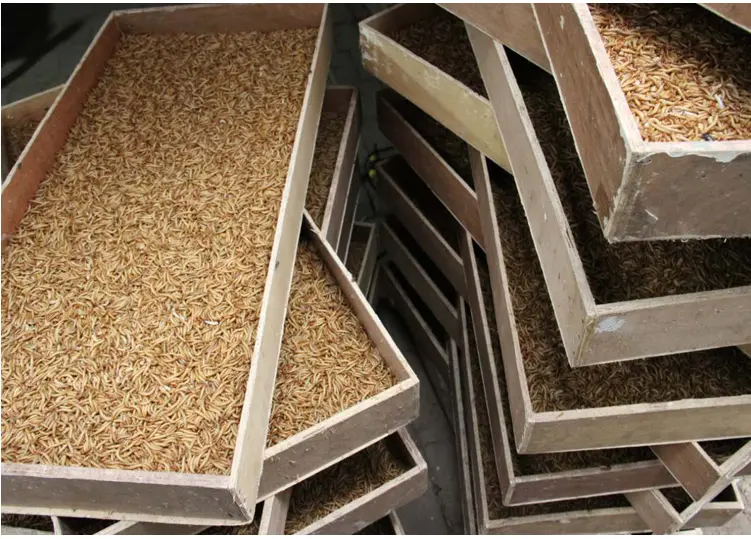How to Dispose Cat Litter
Dealing with cat litter is indeed a job that requires carefulness and patience. Here are some recommended steps
and precautions to help you better deal with cat litter:
How to Dispose Bentonite Cat Litter
1. Cleaning and Disposal
Use a pet-specific cat litter scoop to scoop up the clumped cat litter and excrement together and put them into a special garbage bag.
Bentonite cat litter is insoluble in water, so do not pour it directly into the toilet to avoid clogging the sewer.
The garbage bag needs to be sealed well to prevent odor from escaping. Since excrement will emit a foul odor and may
pollute the environment, it is recommended to discard the garbage bag within one day.
2. Clean the cat litter box
After cleaning the cat litter, use clean water and soap or a pet-specific detergent to clean the cat litter box. This helps to remove residual stains and odors.
Make sure the cat litter box is dry before pouring new cat litter to avoid bacteria breeding in a humid environment.
3. Precautions
When handling bentonite cat litter, pay attention to personal hygiene and avoid direct contact with skin or eyes.
Try to avoid letting bentonite cat litter scatter around the house to prevent it from being accidentally ingested by pets other than cats or children.
The packaging bags of bentonite cat litter should be stored out of reach of cats to prevent them from playing or accidentally ingesting them.
4. Environmental protection suggestions
Consider using recyclable cat litter bags or garbage bags to reduce the impact on the environment.
Encourage the use of environmentally friendly bentonite cat litter, which may use more environmentally friendly packaging and more sustainable production processes.
Through the above steps and precautions, you can ensure that the bentonite cat litter is properly handled, which can not only
keep the home environment clean and hygienic, but also reduce the negative impact on the environment.

How to Dispose Silica Cat Litter
1. Cleaning silica cat litter:
When silica cat litter is saturated with adsorption, you can consider cleaning it to restore its adsorption capacity.
Use a cleaning agent to clean the dirt in the cat litter, making sure to remove all urine and feces residues.
After cleaning, you can soak it in disinfectant, but be sure to rinse the disinfectant thoroughly to prevent cats from accidentally ingesting it.
Another cleaning method is to pour salt into the silica cat litter and rub it repeatedly to remove stains and odors.
2. Drying and storage:
Silicone cat litter needs to be thoroughly dried after cleaning and disinfection to prevent mold and bacteria from growing.
The cat litter can be dried in the sun or in a dryer.
The dried silica cat litter should be stored in a dry, ventilated place to avoid moisture and contamination.
3. Precautions:
When cleaning silica cat litter, avoid using corrosive substances such as strong acids and alkalis to avoid damaging the adsorption performance of the cat litter.
The choice of disinfectant should ensure that it is safe and harmless to cats, and avoid using disinfectants containing harmful chemicals.
Silicone cat litter should be thoroughly dried after cleaning and disinfection before use to avoid moisture causing bacterial growth.
4. Reuse:
Silica gel cat litter can be used again after cleaning and disinfection to provide a clean and hygienic environment for pets.
However, it should be noted that the adsorption capacity of silica gel cat litter will gradually decrease with the increase of the number of uses,
so it may be necessary to replace the cat litter after a period of use.
812118.webp)
How to Dispose Tofu Cat Litter
1. Clean the cat litter:
Use a pet-specific cat litter shovel to clean out the clumped cat litter and cat excrement together.
Since tofu cat litter has good clumping properties, the cleaning process is relatively easy.
2. Flush into the toilet in batches:
Pour the cleaned cat litter into the toilet in batches and in small quantities.
Note: Do not pour a large amount of cat litter at one time to avoid clogging the sewer. It is recommended
that the amount of each flushing should not exceed 1/3 of the toilet capacity.
3. Clean the cat litter box:
After cleaning the cat litter, clean the cat litter box with clean water and soap or a pet-specific detergent.
Make sure the cat litter box is dry before pouring new cat litter.
4. Environmental awareness:
Tofu cat litter is soluble in water, so it can be flushed through the toilet, reducing pollution to the environment.
But also be careful not to use it excessively to avoid increasing the burden on the sewer.





267.webp)







